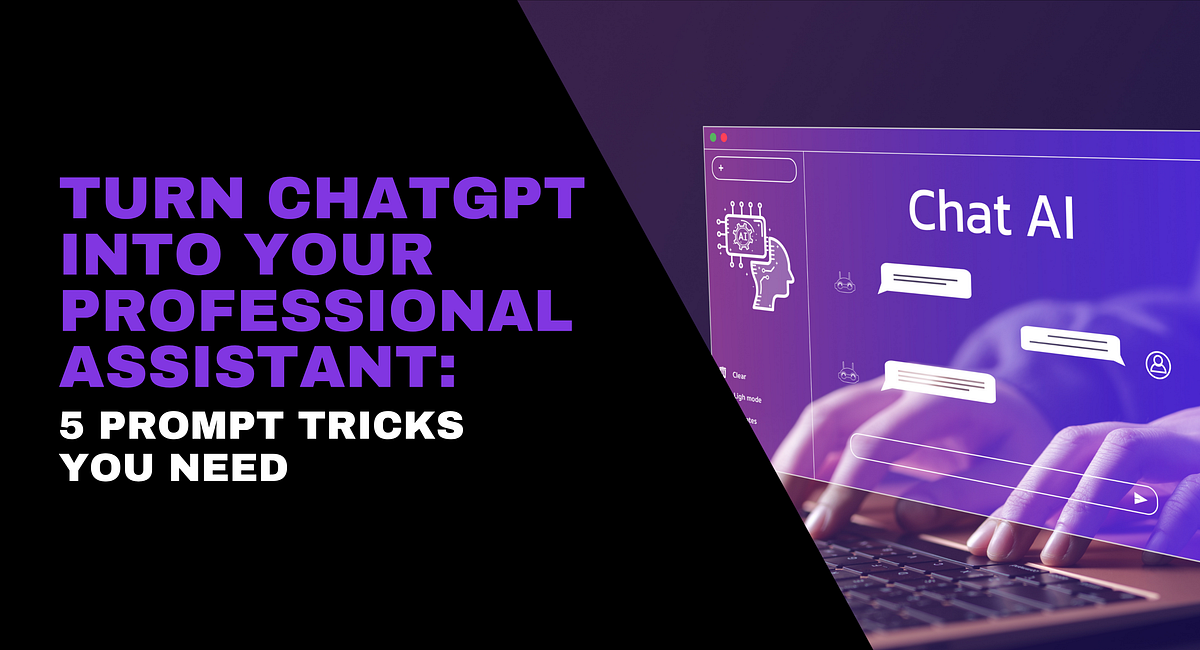Your AI isn’t broken, you just need better prompts.
Five essential tricks to engineer prompts that deliver clear, usable, and professional outputs.
Summarize this article into 5 main points in a simple and clear style.
Sounds simple, right? Yet, anyone who’s tried ChatGPT knows the frustration-responses can be off-target, too generic, or just plain bland. The secret to getting great outputs isn’t the AI itself-it’s in how the questions are asked.
With the right prompts, ChatGPT can become a true professional assistant, generating content that’s precise, structured, and ready to use. Here are five prompt tricks that can completely change how ChatGPT works for you.
1. Be specific, not vague
Vague prompts = vague results. That’s the rule.
The trick is to clearly define:
- Task: What exactly should the AI do?
- Context: Why is it doing it?
- Audience: Who is this for?
- Format: Paragraphs, bullets, tables, or word count
- Tone: Friendly, professional, technical, or casual
Instead of:
“Write a blog about fitness.”
Try:
“Write a 600‑word blog for mid-level professionals explaining how to integrate 20-minute high-intensity workouts into a busy schedule. Use a friendly yet expert tone, include 3 actionable tips, and end with a motivational call-to-action.”
See the difference? Being specific gives outputs that are actually useful the first time around.
2. Assign a role
Want the AI to sound like a pro? Give it a role.
- “Act as an experienced PR consultant and draft a press release.”
- “You are a senior UX designer. Create a wireframe outline for a mobile app onboarding process.”
- “Serve as an interview coach. Suggest 5 thoughtful questions for a leadership interview.”
For example:
“You are an SEO content strategist with 10 years of experience. Create a blog outline on ‘Prompt Engineering for non-technical marketers’, aimed at mid-level marketing managers, structured in 5 headings.”
Roles make the output sharper, more relevant, and way easier to use.
3. Use natural language and provide context
ChatGPT responds better when prompts are written like a conversation. Include context and background so the AI knows what you want.
Instead of:
“Email boss. Ask for a promotion. IT Dept.”
Try:
“Write a 200‑word email to a manager requesting a promotion, highlighting recent achievements and contributions. Keep it professional but approachable.”
Context ensures the response is on-point, professional, and ready to send.
4. Break down tasks and include examples
Big, complex prompts can confuse the AI. Break things into smaller steps. For instance, instead of asking for an entire marketing campaign in one go:
- Outline the campaign strategy
- Suggest 3 potential taglines
- Draft the email copy
Adding examples of what you like-or don’t like-guides the AI even further:
“Here’s a sample intro paragraph: [sample]. Use a similar structure. Avoid clichés like ‘game-changer’ or ‘cutting-edge.’”
Breaking tasks down saves time, improves accuracy, and reduces frustration.
5. Advanced GPT‑5 tricks: control length, use tags, and iterate
For those using GPT‑5 and beyond:
- Control length: “Summarize in 100 words” vs. “Provide a detailed 600‑word explanation.”
- Use structured tags: <task>, <context>, <format>, <tone>, <bans>
- Iterate for perfection: Ask the AI to define a world-class answer, then have it improve its own output
These tricks turn ChatGPT from a basic assistant into a true professional partner.
The universal prompt formula
A professional prompt can follow this simple structure:
- Task: What the AI should do
- Context: Background or purpose
- Audience: Who it’s for
- Example: Reference style or format
- Format: Paragraphs, bullets, tables, or word count
- Tone: Friendly, professional, technical, or relatable
- Bans/Preferences: Words, styles, or approaches to avoid
Apply this formula consistently and watch outputs improve dramatically.
Why prompt engineering matters
Structured prompts save time, improve quality, and make AI outputs usable immediately. Professionals who master this skill can rely on ChatGPT as a strategic partner-whether for content creation, marketing, coding, or analytics.
Take skills to the next level
For those looking to truly harness AI productivity, advanced prompt engineering can open new possibilities. From crafting structured prompts to guiding outputs across different tasks, learning these skills can make ChatGPT a more reliable and effective professional assistant.
The Global Skill Development Council (GSDC) offers programs designed to help professionals stay ahead in the evolving AI landscape. One such program, the Prompt Engineering Certification, focuses on mastering the art of building intelligent, structured prompts that drive consistent and meaningful outcomes.
By combining practical learning with real-world applications, this certification helps professionals refine their approach to AI tools, boost productivity, and confidently produce high-quality, AI-driven results across industries like content, marketing, coding, and analytics.
The Big Picture
Getting the most out of ChatGPT isn’t just about asking questions-it’s about engineering prompts that are structured, context-rich, and actionable. By being specific, defining roles, providing context, breaking tasks into smaller steps, and applying advanced GPT‑5 techniques, ChatGPT becomes a dependable professional partner.
For those who want to explore this further, certification programs exist to help formalize and refine these skills, making AI a truly powerful tool for productivity, creativity, and professional growth.
